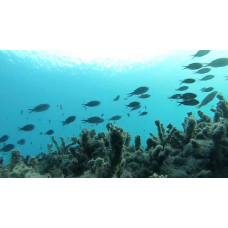Latin borealis, from the Greek boréas, northern.
The geographical area of the world's oceans lying between 40° and 60° N.
The European Commission and the Council of Europe have defined the Boreal Region to report on conservation efforts and results. The European Union's Boreal Region includes most of the Baltic Sea, the Baltic States of Estonia, Latvia and Lithuania, and most of Sweden and Finland. The bio-geographical region extends eastwards into Russia.
In their 1995 review of northern rivers, Petersen et al. distinguish two biogeographical regions in the Fennoscandinavian Shield. Their southern group of mixed-forest rivers in south-eastern Finland has short, low-gradient streams in mixed coniferous forests, connecting many clear or humic lakes, ponds, peat bogs and wetlands that overlap the boreo-nemoral zone. This region could include the entire Neva River basin. Another region is their group of boreal rivers with "high gradient streams in coniferous and deciduous forests of the boreal vegetation zone".
A zoogeographical region of the world's oceans that lies between the Arctic and Tropical regions. In contrast to the Tropic and Circumpolar Regions, where water temperatures are almost constant throughout the year, the Boreal Region is characterised by large seasonal variations in water temperature - from 3 to 15°C and more. Because of this, the organisms that live there (boreal organisms) are able to tolerate significant temperature changes (eurythermic organisms).
For example, in the coastal zone in winter, bivalve molluscs cool down very strongly twice a day at low tide. In terms of light, the boreal region differs from the neighbouring Arctic region in that day and night alternate throughout the year. This allows plant organisms to vegetate for most of the year.
The boundaries of the boreal region are not the same for organisms living in the water column (plankton) and on the bottom (benthos) and for organisms living at different depths (littoral, sublittoral, bathyal).
Taking into account the distribution of the sublittoral fauna, the southern boundary of the boreal region will be between 30°N and 40°N, almost coinciding with the mean annual isotherm of 15°С; in this case, its northern boundary in the Atlantic Ocean will be the line almost coinciding with the mean annual isotherm of 4-5°С. In both the Atlantic and the Pacific, the boreal zone tapers in a wedge shape from east to west. This is due to a system of warm and cold currents that collide off the east coast of North America (Cape Hatteras North) and off the east coast of Asia (near Japan) and diverge widely in the western Atlantic and Pacific. The B.o. gradually passes from one side to the Arctic and from the other to the tropics.
The intermediate zone inhabited by Arctic and boreal organisms is sometimes called the Boreo-Arctic or Subarctic, and that inhabited by tropical and boreal organisms is called the Subtropics.
Boreal region
Tags: Boreal region

